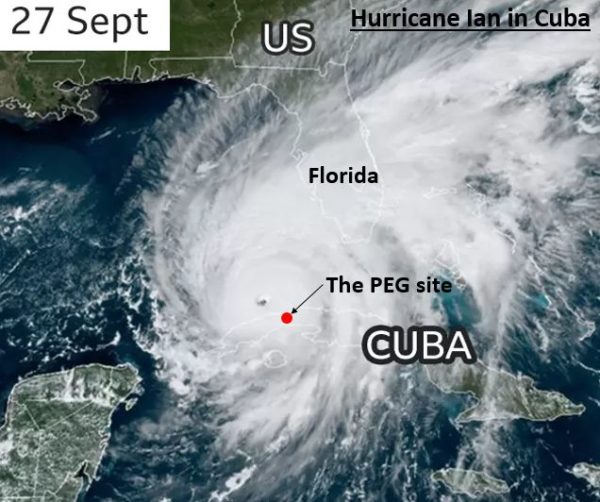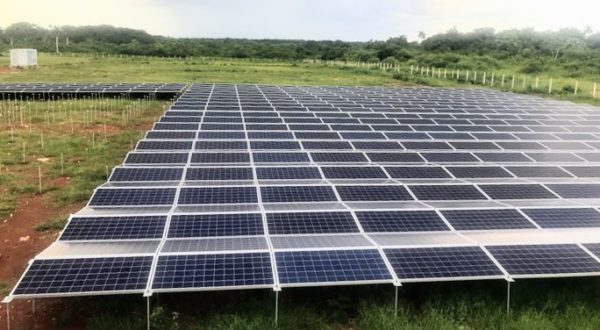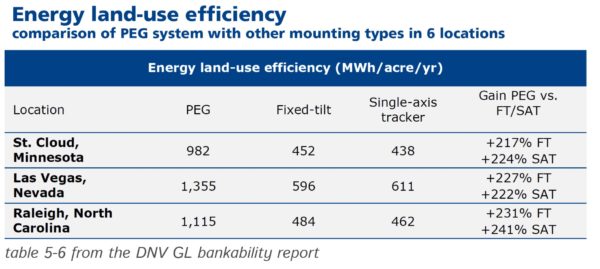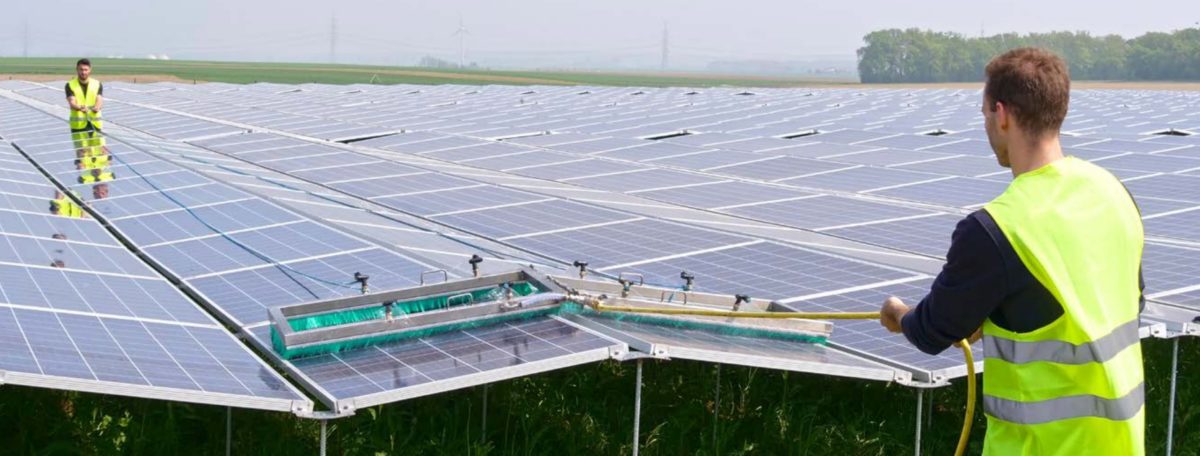Racking systems have evolved significantly in the past decade. Even in the past two years there have been considerable improvements. For ground mounts, there are fixed racking systems, single and double axis trackers, and trackers that use air, hydraulics or motors. More recently, we have seen a racking system that *isn’t* a racking system. In this article, we’ll be discussing the ultra-low-profile PEG system.

PEG is a racking system developed by Jurchen Technology, headquartered in Germany, with offices in California. PEG’s claim to fame comes from its racking system’s low-cost hardware coupled with quick installation time, which results in a very competitive price. The hardware is relatively low priced because there is so little of it. Each solar module requires only 1.1 metal rods, 2 plates, and 2.2 clips, according to documentation from PEG.
Somewhat unintuitively, this ultra-light low-profile racking system was able to meet very aggressive wind codes. PEG recently promoted that its system was certified by the I.F.I. Institut für Industrieaerodynamik GmbH to withstand up to and greater than 185 miles per hour. This certification has already been put to the test, since PEG has been installing a project in the Caribbean, which is known for its beautiful beaches and devastating hurricanes.

Because the company holds its data close to its vest, prospective customers will have to reach out to the company directly to get information regarding their wind certification.
PEG’s high wind speed rating began to pay off just a few weeks ago, as hurricane Ian’s eyewall passed less than 50 miles from their site in Cuba, which was under construction at the time. As the hurricane passed by, wind speeds from the Category 3 storm were at a sustained 125 mph or greater. As the storm continued north, into the very warm Gulf of Mexico, its speed increased. Winds coming from the north eventually reached 155 mph, just 2 mph shy of a category 5.

Image: Jurchen Technology
While no post-storm images are available, Matthew Lusk, vice president of business development at Jurchen Technology told pv magazine USA that its facility was not damaged. Others were not as lucky. Total damage from the storm ran into the billions of dollars, and killed at least two in Cuba and at least 114 in the United States.
Land on an island is expensive, and for the island nations of the Caribbean, the densely configured hardware with resistance to extremely high winds is a particularly attractive combination.
An analysis by DNV suggests that a PEG system, with its 97% ground coverage ratio, installs 0.74 MW per acre capacity and generates 1,520 kWh/kW/year. While this 1,520 kWh/kW/year value is, of course, lower per panel than we would see from a tracking facility in North America, it is still a very impressive feat for a single acre to fit 0.74 MW. The per-acre capacity of a tracking facility is low by comparison: just 0.2 MW/acre.

The DNV analysis suggests that PEG’s energy dense facilities can generate more than double the electricity per acre than a fixed and single axis tracking system.
In a world where the price of solar modules continues to decline and labor takes over as one of the highest costs of a solar project, it now makes more sense to design for maximum land efficiency, rather than for maximum solar panel efficiency.
This content is protected by copyright and may not be reused. If you want to cooperate with us and would like to reuse some of our content, please contact: editors@pv-magazine.com.









By submitting this form you agree to pv magazine using your data for the purposes of publishing your comment.
Your personal data will only be disclosed or otherwise transmitted to third parties for the purposes of spam filtering or if this is necessary for technical maintenance of the website. Any other transfer to third parties will not take place unless this is justified on the basis of applicable data protection regulations or if pv magazine is legally obliged to do so.
You may revoke this consent at any time with effect for the future, in which case your personal data will be deleted immediately. Otherwise, your data will be deleted if pv magazine has processed your request or the purpose of data storage is fulfilled.
Further information on data privacy can be found in our Data Protection Policy.